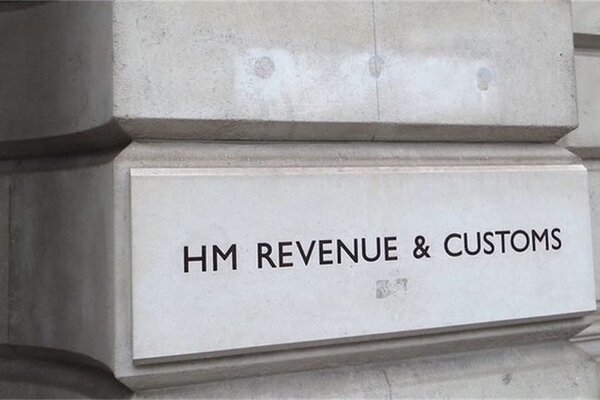Understanding Pricing Strategies for Self-Employed Nail Technicians in Salons

When self-employed nail technicians lease space within a salon, a common question arises: can they set their own prices for the services they provide? The answer is not always straightforward and depends on various factors such as the salon’s policies, agreements, and market conditions.
One significant benefit for self-employed nail technicians is the flexibility to create a pricing strategy aligned with their brand, quality of service, and target clients. However, this autonomy can sometimes be restricted by the salon’s management, who may have a broader pricing policy for consistency. In this article, we delve into the specifics of this topic, providing clarity and guidance to help nail technicians understand their rights and responsibilities.
Salon Agreements and Policies
Typically, salons have specific agreements that outline pricing guidelines for self-employed technicians. These agreements can vary significantly, so it’s essential for technicians to thoroughly read and understand them before committing.


Market Conditions and Competition
Market conditions and local competition play a significant role in pricing. Nail technicians must consider these factors when setting their prices to ensure they remain competitive and attract clients.

In 2020, the beauty and personal care market saw a revenue of £29.4 billion, highlighting the robust nature of this industry.
Revenue Streams in 2020

There was a significant increase in self-employment within the beauty sector in 2021, with over 20% more individuals opting for self-employment compared to previous years.Self-Employment Surge in 2021

Legal and Financial Considerations
For self-employed nail technicians, legal and financial considerations are paramount. Knowing your legal rights about setting prices within a rented salon space is crucial. Often, salon owners will draft contracts that stipulate whether or not you can set your own rates. These contracts ensure consistency across the board, allowing salon businesses to maintain a uniform brand image and customer experience.
Additionally, self-employed individuals must understand their tax obligations, pricing strategies, and financial forecasting to run a successful business. Using resources like the Pie Tax App can aid in better managing taxes and ensuring compliance with UK tax laws . The Expert tax assistants available on the Pie app can offer personalised advice to ensure you're not overpaying on taxes and maximising your earnings.
Negotiating with Salon Owners
Negotiating the terms of your contract with the salon owner is an essential step. It's important to ensure clarity on whether you'll have the autonomy to set your own prices. A well-negotiated contract can pave the way for operational independence and greater satisfaction in your services as it allows you to create a pricing strategy that reflects your skills and the value you provide.
Moreover, ensuring transparency and aligning your pricing with the overall market trends can help you stay competitive while still offering unique, high-quality services. Leveraging the Pie Tax App can assist in forecasting your earnings and ensuring you are pricing your services correctly to stay profitable.

Future Predictions and Tips
As the market evolves, self-employed nail technicians will likely continue to gain more flexibility in setting their prices.

Adaptation to Trends Stay abreast of the latest industry trends to adjust your pricing strategy accordingly.

Client Feedback Regularly seek customer feedback to ensure your prices reflect the perceived value of your services.

Continued Education Invest in further education and certifications to justify higher pricing.

Fun Facts
Did you know that the first-ever nail salon opened in the United States in 1878? Since then, the industry has evolved tremendously, with countless advancements in techniques and products, making it an exciting field for innovation and creativity.
Practical Advice for Setting Prices

When determining your prices as a self-employed nail technician, always start by evaluating the costs you incur, including rental fees, product costs, and utilities. From there, consider the profit margin you need to sustain your business and personal expenses.
Engage with your clients to understand their willingness to pay and adjust your prices accordingly. Don’t forget to factor in your experience, skill level, and any additional services or perks you offer. Expert tax assistants available on the Pie app can provide guidance on ensuring you're financially stable while meeting all your tax obligations.

Evaluating different pricing structures can help you find a balance that works for your business. Charging by the hour can be ideal for more extended or intricate services, allowing flexibility in billing based on the time and effort required. On the other hand, fixed rates for specific services ensure that clients know exactly what to expect in terms of cost. This predictability can make it easier for clients to compare your services with those of your competitors, potentially making your offerings more attractive.Evaluating Pricing Structures

Regularly conducting financial audits is essential for maintaining a healthy business. Tracking expenses closely is crucial, as it helps in setting appropriate prices and managing overall profitability. You can make informed decisions about pricing and budget management by monitoring your spending. Additionally, analyzing revenue streams provides valuable insights into the most profitable services. This understanding can guide you in making necessary price adjustments, ensuring that you optimise your financial performance.Regular Financial Audits
Summary
In conclusion, whether self-employed nail technicians can set their own prices in a salon greatly depends on the agreements they enter into with salon owners and the prevailing market conditions. It’s crucial to understand these factors and negotiate terms that provide the necessary autonomy. Legal and financial considerations play a pivotal role, and leveraging tools like the Pie Tax App can ensure compliance and profitability.
Regularly assessing your pricing strategy and staying informed about industry trends will place you in a stronger position to offer competitive and valuable services. Ultimately, being proactive and informed will aid in navigating the complexities of pricing within the salon environment.
Frequently Asked Questions
Can I set different prices from other nail technicians in the same salon?
Typically, this depends on salon policy. It’s crucial to have a clear contract.
How do I ensure my pricing is competitive?
Research local market rates and adjust your services and prices to match the value you provide.
What should I include in a pricing contract with a salon owner?
Ensure the contract specifies pricing flexibility, rental fees, and other financial arrangements.
How can I manage my taxes as a self-employed nail technician?
Using the Pie Tax App can help manage your taxes efficiently with expert guidance available.
Can adjusting my prices lead to more clients?
It can; however, ensure price adjustments reflect the quality and value of your services to retain client trust.











